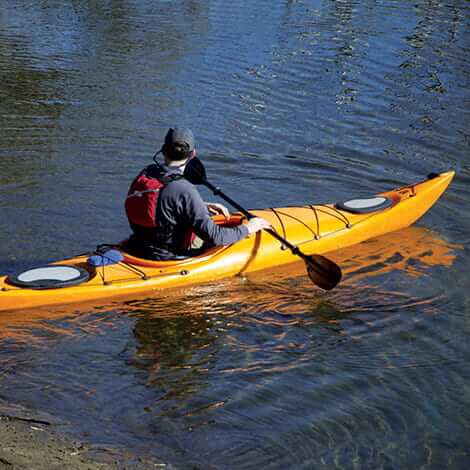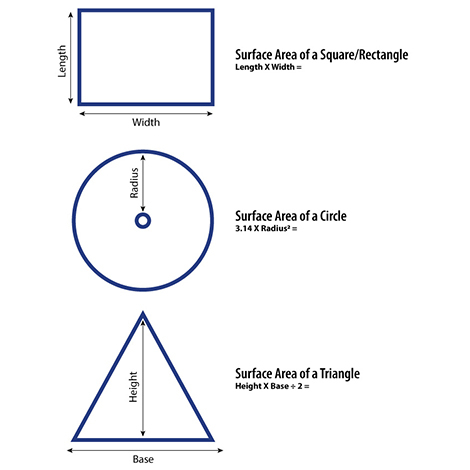Knowing your pond’s size is crucial for determining treatment dosage rates, how many fish to stock, and which aeration system to install. Determining the size of your pond requires tools, equations, and some hands-on work. Once you have the measurements, you will better understand which aeration system to use.
We made these calculations easy with our handy Pond Calculator. All you need is your waterbody’s length, width, and maximum depth. If you prefer to do the math yourself, keep reading to learn the equations.
Surface Area
The first numbers you need to measure a pond are the length and width. Rectangular ponds are the easiest to measure, but you can also figure out these numbers for a circular, triangular, or irregular-shaped pond. Pace it off (one step is about three feet,) or use a measuring tape to get the numbers you need and then plug them into one of these formulas:
- Surface area of a square/rectangle = Length × Width
- Surface area of a circle = π × Radius2 (i.e. 3.14 × Radius × Radius)
- Surface area of a triangle = Height × Base ÷ 2
- Irregular: Measure your pond in sections using the calculations above or use an online mapping tool.
To determine how many acres your pond is, divide the surface area by 43,560 (the number of square feet per acre.)
Depth
Diffusers placed in deeper areas aerate more efficiently, so knowing the maximum depth is essential for pond aeration sizing. If you do not know the depth or think it may have changed over the years, it is time to find out.
Start by grabbing a string marked in one-foot intervals, a weight (like a brick or sinker), a notepad, a pencil, and a boat or raft. Then, head out to your pond and follow these directions:
- Securely attach the weight to one end of the string.
- Hop into your watercraft and venture out to the pond's center.
- Drop the weighted string into the pond and note where it hits the bottom. Repeat in at least four other locations—more if your pond is particularly large—so that you have adequate sampling to measure the depth.
Shape
Something to keep in mind when measuring is that ponds with islands, coves, irregular shorelines, or other unique features require more diffusers than a uniform pond, as these features limit the circulation of oxygenated water. As noted above, breaking odd-shaped ponds into sections can help you determine how many diffuser plates are required for the entire pond.
Putting It All Together
Airmax simplifies the selection process for sizing an aeration system for ponds. For each of their units, they provide you with a pond aerator size chart with the maximum acreage a system can aerate based on the depth. Plus, the included schematics help show where the diffuser plates should be placed based on the shape of your pond.
Pond Aerator Sizing and Measurement Questions
Still feeling stumped on how to find the right aeration system for your pond or have questions about calculating your pond volume? Call us at 866-766-3435 for our free personalized pond profile service, or use the Online Pond Profile Service.
Explore these helpful guides for more tips on choosing the correct aerator:
Why Aerate My Pond
Types of Pond and Lake Aeration Systems
Alternative Energy Pond Aeration Options
Why Pond Depth Matters
Last Updated: May 1, 2024

